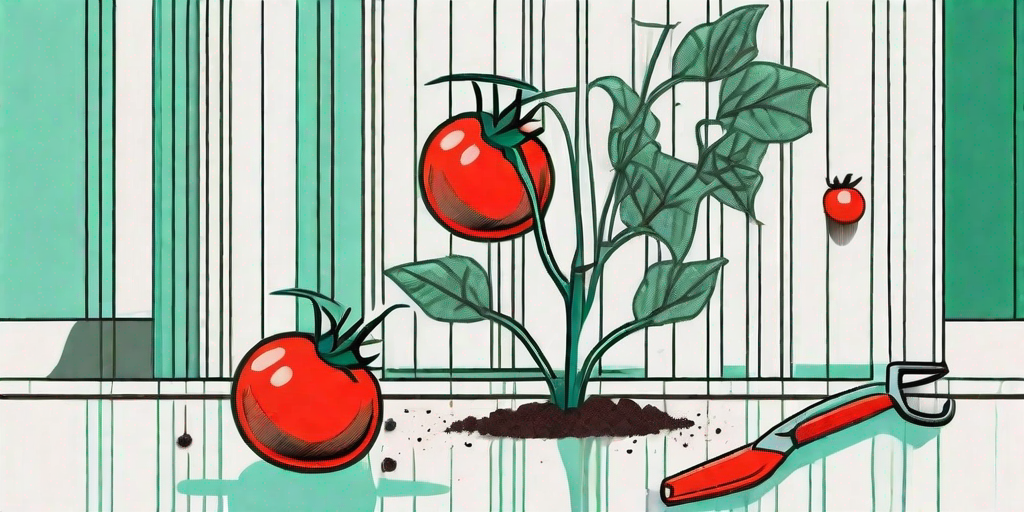
If you've ever been bamboozled by the wild and unruly growth of your tomato plants, you're not alone. But fear not, dear gardener, for we have the ultimate guide to help you tame those tomato suckers and pave the way for a bountiful harvest. So, grab your pruning shears and let's dive into the world of tomato pruning.
Understanding Tomato Suckers
Before we start our pruning journey, let's clear up what a tomato sucker is. No, it's not a lollipop flavored like a tomato - although that would be interesting. A tomato sucker is a small shoot that sprouts out from the joint where a branch meets the stem on your tomato plant. Left unchecked, these suckers can grow into full-sized branches, turning your tomato plant into an unruly beast.
While it might seem like more branches would mean more tomatoes, that's not always the case. These suckers can sap energy away from the main plant, leading to fewer and smaller tomatoes. So, it's time to show these suckers who's boss.
Pruning 101: How to Prune Tomato Plants
Step 1: Identify the Suckers
First things first, you need to know what you're looking for. Tomato suckers sprout from the crotch joint of two branches. They start off small, but can quickly grow into a large branch if not pruned. So, keep a keen eye on your tomato plants and nip those suckers in the bud (literally).
Remember, not all branches are suckers. You don't want to accidentally prune a main branch and end up with a bald tomato plant. That would be a tomato tragedy.
Step 2: Prune Early and Often
When it comes to pruning tomato plants, the early bird gets the worm - or in this case, the tomato. The best time to prune tomato suckers is when they're small. They're easier to remove and doing so causes less stress to the plant.
Make pruning a regular part of your gardening routine. This will help keep your tomato plants healthy and productive. Plus, it's a great way to get some fresh air and exercise. Who knew gardening could be such a workout?
Step 3: Use the Right Tools
Pruning tomato plants isn't a job for your kitchen scissors. You'll need a pair of sharp pruning shears to get the job done right. Make sure your shears are clean and sharp. Dull or dirty shears can damage your plants and spread disease.
And remember, safety first. Always wear gloves when pruning to protect your hands. You never know when a rogue thorn might try to make a sneak attack.
Benefits of Pruning Tomato Plants
Now that you know how to prune, let's talk about why you should prune. Pruning tomato plants has several benefits. First, it helps increase airflow around your plants, which can help prevent diseases. It also allows more sunlight to reach the lower leaves, promoting healthier growth.
Pruning also helps direct more energy towards fruit production. This means bigger, juicier tomatoes for you to enjoy. So, if you want to be the envy of your neighborhood with your tomato harvest, start pruning.
Common Pruning Mistakes to Avoid
Like any skill, pruning takes practice. But don't worry, we're here to help you avoid some common pruning pitfalls. First, don't over-prune. While it's important to remove suckers, you don't want to strip your plant bare. Leave some leaves to help with photosynthesis.
Also, be careful not to damage the main stem when pruning. A damaged stem can weaken your plant and make it more susceptible to diseases. So, prune with care and your tomato plants will thank you.
Frequently Asked Questions
- When is the best time to prune tomato plants?
The best time to prune tomato plants is in the early morning when the plant is well-hydrated. This will reduce the stress on the plant and help it recover more quickly from pruning.
- Can I prune tomato plants too much?
Yes, over-pruning can stress your plants and reduce their productivity. It's important to strike a balance between removing suckers and leaving enough leaves for photosynthesis.
- What should I do with the suckers after pruning?
You can compost the suckers after pruning. However, make sure your compost pile is hot enough to kill any potential diseases.
Conclusion
Pruning tomato plants might seem like a daunting task, but with a little practice, you'll be a pruning pro in no time. Remember, the key to successful pruning is to start early, prune often, and use the right tools. So, say goodbye to those pesky tomato suckers and hello to a bountiful harvest.
Happy pruning, fellow gardeners!











